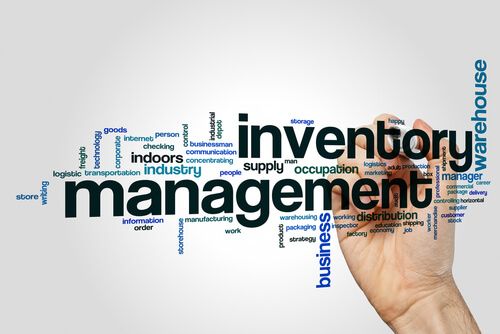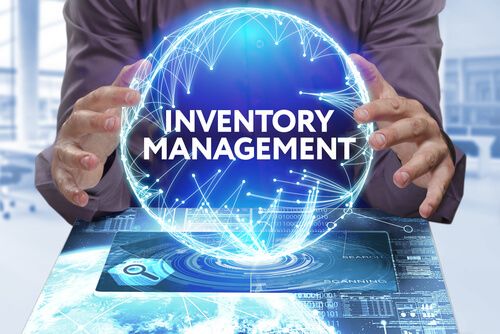Inventory management is a crucial step to make your business grow and become successful. So, what is inventory management? It is a method that helps the company to know and understand the stock that is present and the stock that should be ordered. It helps in tracking Inventory from the purchase to the sale of the products. This practice helps the management know that they have sufficient stock to fulfil customers' needs without worrying about the shortage.
However, it is not advisable to keep high stock because it may reduce cash flow. After all, good inventory management ensures that there is no dead-stock or unsold stock. Below are a few tips, types and benefits to help you give better insight into inventory management.
Benefits of Inventory Management
Inventory management is essential for the business's health because it ensures that a business is never out of stock when it comes to meeting the needs of customers. We have listed down a few advantages of inventory management that might be helpful for you.
- Money-Saving: Inventory management gives you an understanding of the stock. This ensures that you use the stock in hand first and see how much you need for the future. Thus, this reduces the excess stock availability at the warehouse and decreases the inventory cost. That leads to money-saving.
- Improves Cash Flow: When you do proper inventory management, then there is sufficient cash flow. This means the cash is moving in business because you spend money on selling the Inventory.
- Customer Satisfaction: Inventory management ensures that customers receive what they want at the right time. This ensures customer satisfaction and connects with loyal customers for a long time.

Types of Inventory
This helps in sorting your Inventory into different categories, and managing Inventory becomes easy. We have listed down types of Inventory for your reference:
- Raw materials are the material that is used for product manufacturing.
- Unfinished products are products that are still a work in progress and can't be sold.
- Finished products are the ones that are stored in a warehouse until shipped or sold.
- In-transit goods are the ones that are being sent to the final destination and are not present in the warehouse.
- Cycle inventory is shipped from supplier or manufacturer to business and sold immediately to customers.
- Anticipation inventory is the excess products that are in surge for sale.
- Decoupling Inventory is the supplies, parts, or products set in anticipation because of a halt or slowdown in production.
- MRO goods mean the maintenance, repair and operating supplies that help in the production process.
- Buffer inventory is also called safety stock that is the cushion for an unexpected need for Inventory.
Tips for Inventory Management
Inventory management is an important piece that ensures business profitability. To have effective inventory management, we have listed down a few tips to ensure profitability and cash flow.
1. Prioritise you Inventory
Creating categories of Inventory as per the priorities will give you an understanding of which items you will need most. You can segregate Inventory based on the demand. For instance, if an item has more demand, that should be in stock always. Prioritising the Inventory ensures that you are never out of stock and saves money by avoiding dead stock.
2. Inventory Auditing
You must be thinking, what do you mean by inventory management? Inventory management is a process that ensures stocking, ordering and using the business material and products. So how inventory auditing helps? Inventory auditing ensures that you spot check for the hottest item. Inventory auditing could be comprehensively done once a week, month or year, depending on your size and nature of business. The inventory auditing will ensure that the inventory count matches up to what you think you should have.
3. Track Product Information
Always keep in mind to have record and product information of every item in stock. This information includes barcode data, suppliers name, origin, SKUs and other details. You should also know about the tracking cost of each item to keep in mind the cost. Tracking the product information becomes valuable in times of scarcity and seasonality.

4. The 80/20 Inventory Rule
The key answer to what is an inventory management system? Is by knowing the inventory rule. The rule states that 80 per cent of profits come from the 20 per cent stock. This means you should make priorities of 20 per cent of your stock. You should know everything about these items like their lifecycle, how much is sold in a week, month, and closely monitor them. This is because you earn most of your profits through these items. So, don't be short about managing them!
5. Supplier Performance
Supplier could help you with inventory management, or it could cause problems with your Inventory. If your supplier is usually late with deliveries and is mostly in shortage with your order, your supplier is unreliable. Plus, you should take action against him. Initially, you can convey your issue to him, and if he doesn't improve with time, you can switch your supplier. It is important because you should never run out of Inventory due, and you can't afford to have uncertain stock levels.
6. Sales Tracking
Every business does this - adding the daily sales during the day end. It is a no-brainer, but you have to analyse your data. For instance, why is a product selling faster during a particular time? Is it a seasonal item? Or why there is a sale during a specific day of the week? Knowing the broader picture about your sales ensures that your Inventory is in control.

7. Inventory Management Technology
Instead of managing the Inventory manually, use the software and technology to do so. Instead of keeping inventory records on spreadsheets or notebooks, use inventory management software. It will make your tracking easy and will give your analysis about your sales too. Thus, using some technology won't harm you?
Every business requires a minimum amount of Inventory, depending on the nature of the business. Thus an efficient inventory management system is needed to track the stock movements and stock levels. Plus, different inventory management systems provide a real-time, single time view of the item in the stock. This ensures that businesses have to keep less Inventory in hand and lowers the cost. Visit OKCredit to know more about inventory management and its benefits for your business.
Also Read:
1) What is Sustainability in Business?
2) Is building Material Business Profitable?
3) How Profitable Is The Stationery Business?
4) What is the best business ideas to start on a highway in India?
Stay updated with new business ideas & business tips with OkCredit blogs in English, Hindi, Malayalam, Marathi & more!
Download OkCredit now & get rid of your bookkeeping hassles.
OkCredit is 100% Made in India.
FAQs
Q. How can you improve inventory management?
Ans. To improve inventory management, you should take physical stock count regularly with the accounting records. Plus, you should know about the stock condition in case your business deals with perishable items. Also, this system gives an organisation real-time knowledge of the Inventory and helps in improvising the stock decisions.
Q. What is the main objective of inventory management?
Ans. The objective behind needing inventory management is to keep sufficient stock to meet customers' needs. Also, it helps in earning maximum profit while investing little in inventory maintenance.
Q. What are the different types of inventory management systems?
Ans. We have listed down the three popular types of inventory management that businesses can use as per their operation. Please have a look:
- Manual Inventory System: The physical counting of the Inventory and recording them on paper or in a spreadsheet. Various small businesses still use manual inventory systems.
- Periodic inventory System: In this inventory system, the periodic and manual count is done by the businesses. The item details are recorded as they come in and move out of the stock. Records are maintained in the database with location and stock levels.
- Perpetual Inventory System: It gives real-time stock data. These systems rely on active radio frequency identification and send the information to the database.
Q. How does inventory management improve the supply chain?
Ans. Proper inventory management balances out the customer demand with the storage space in a supply chain. It gives visibility in the supply chain so that managers can coordinate with the production department to meet the demand.
Q. What do you mean by poor inventory management?
Ans. It is the imbalance between keeping too little and too much stock. This increases the cost of owning and maintaining the Inventory. Also, it hampers the demand and sale in a business.



![Series Funding [Types, How it works and More!]](https://okcredit-blog-images-prod.storage.googleapis.com/2021/02/seriesfunding1.jpg)
